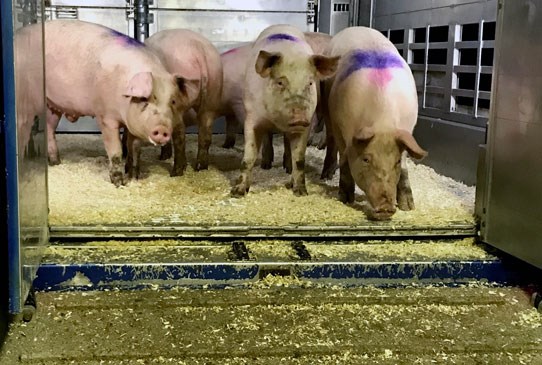Facts:
Participating researchers at the department
- Doctoral student Sofia Wilhelmsson
- Associate professor Jan Hultgren
- Associate professor Jenny Yngvesson
- Associate professor Maria Andersson
Collaboration
- Occupational and Environmental Medicine, Lund University (assoc prof Inger Arvidsson and Dr. Camilla Dahlqvist)
- Animal Welfare Science Centre, University of Melbourne, Australia (prof Paul Hemsworth)
Financing
The project is funded by a grant from the Swedish Research Council Formas (registry no. 2016-01790) and by the Faculty of Veterinary Medicine and Animal Science at SLU.
References
Pulications
- Wilhelmsson S, Hemsworth PH, Andersson M, Yngvesson J, Hemsworth L, Hultgren J. 2024. Training of transport drivers improves their handling of pigs during loading for transport to slaughter. Animal 18:4.
- Wilhelmsson S, Andersson M, Hemsworth PH, Yngvesson J, Hultgren J. 2023. Human-animal interactions during on-farm truck loading of finishing pigs for slaughter transport. Livestock Science, 267, 105150.
- Wilhelmsson, S., Arvidsson, I., Hemsworth, P. H., Andersson, M., Yngvesson, J., & Hultgren, J. 2022. Effects of a training intervention for Swedish pig transport drivers on physical workload and time efficiency during loading. International Journal of Industrial Ergonomics, 92, Article 103356.
- Wilhelmsson, S There’s no time to rush! : pigs’ and transport drivers’ welfare and interactions during slaughter transport. Doctoral Thesis No. 2022:34.
- Working conditions at slaughter transport of pigs in Sweden. Summary of the result from the study, SLU, 2021.
- Wilhelmsson, S., Andersson, M., Arvidsson, I., Dahlqvist, C., Hemsworth, P.H., Yngvesson, J., Hultgren, J. 2021. Physical workload and psychosocial working conditions in Swedish pig transport drivers. International Journal of Industrial Ergonomics, 83, 103124.
Further information can be obtained from Sofia Wilhelmsson.
